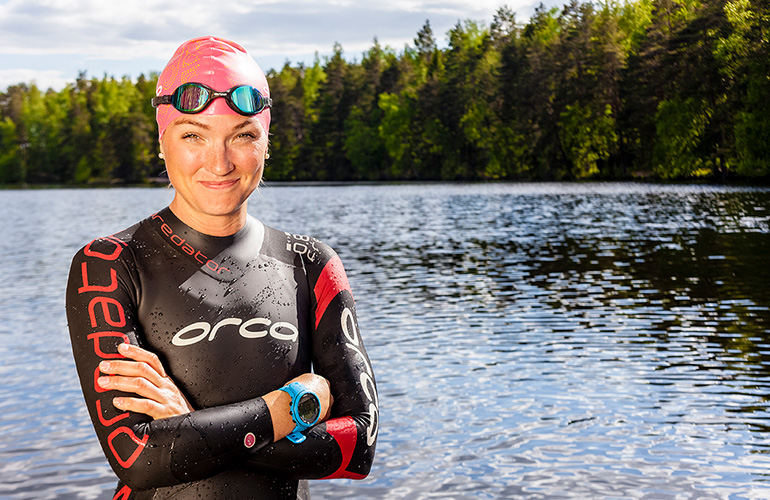Swedish triathlete Åsa Lundström learned to swim later in life, but thanks to good training she improved rapidly and became a champion. Below she shares eight tips for becoming a better swimmer in open water races.

Medical student Åsa Lundström is a two time Ironman winner and Swedish long distance champion. © Petri Kovalainen
Open water swimming is a lot more challenging than swimming in a pool. Wind, waves, currents, navigation, others swimmers splashing around you make having a strong technique and mindset essential.
1. Mind power
Open water swimming races can be mentally challenging. You can swallow water, have trouble navigating, get water in your goggles and knocked around by other swimmers. It’s important to stay focused and not get lost in negative thoughts. Try to develop tools to keep a positive mindset. For example, repeating your own positive mantra can be helpful.
2. Practice swim starts
If you lose your focus at the start of a race because someone is hitting you every second or two it can affect you for the whole race. But if you're familiar with it, then it won't affect you as much. To work on this, practice swim starts in a pool with a group of training friends.
3. Balance is key
Strong swimmers are much more stable in rough water. That's why weaker swimmers should work on their balance and stability by doing pool drills. Side kicking and polo swimming drills are good to start with. Core strength training exercises are also good.
Click here to find out how Åsa went from non-swimmer to champion triathlete

Doing drills with buddies helps to simulate race conditions. Petri Kovalainen
4. Follow the feet
During a swimming race, having someone immediately behind you can destroy your rhythm. It’s good to simulate this experience in a pool so you get used to it. A good drill for this is swimming in a row with three training friends, each on the feet of the other. Try being in each position – front, middle, back.
5. Know the conditions
You don’t want any surprises on race day. Make sure you know you can handle the conditions. If the race is in cold water, then you should practice in cold water. If the race is in open water, you should train in open water.
6. High frequency
To help maintain your technique in challenging conditions, try to have a high frequency arm turnover, higher than you normally would have in a pool. It makes you stronger, less impacted by people hitting you and helps you to slice through waves.

Learning to breath on both sides is important. © Petri Kovalainen
7. Find a landmark
When you swim in open water, it’s a good idea to navigate for a landmark, not something in the water. I try to find a landmark above the buoy so I don’t have to lift my head as much. The higher the landmark, the easier it is to navigate and not miss your target.
8. Breath on both sides
It’s a good idea to practice breathing on both sides. If you’re in a race and you have someone close to your right side, it might be better to breathe on your left side. Being able to breath on either side is also useful if waves are coming from one direction, or if you are trying to navigate towards something.
Lead image: © Orca/Gines Diaz